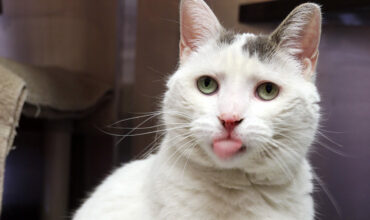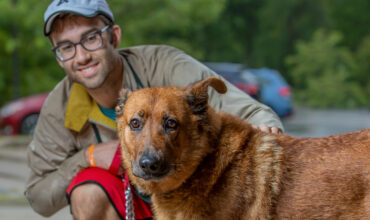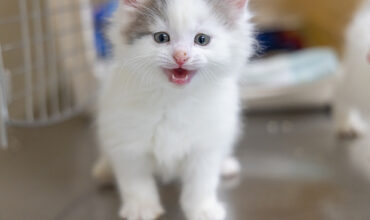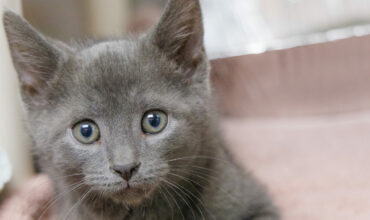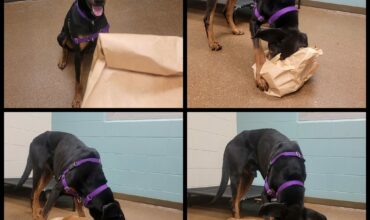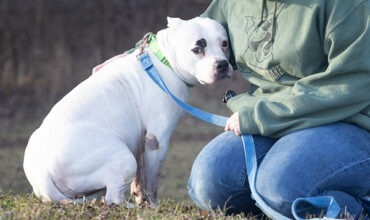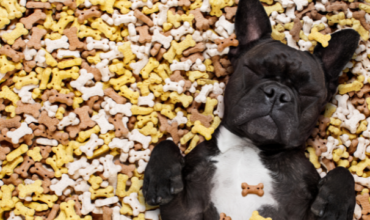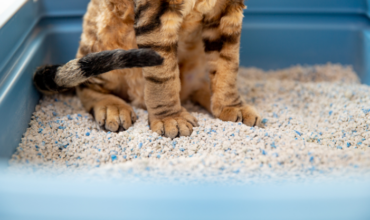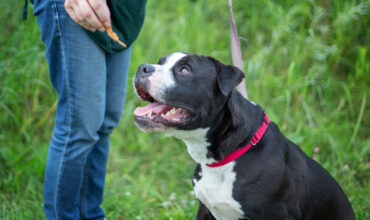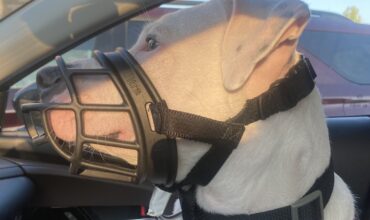We unlock the mystery of how to get your cat to do what you want.
Read More
Archives for Behavior tips
Calming Your Anxious Dog
Our staff and volunteers spend hours each day walking the dogs and providing them with mental and physical stimulation that keeps them comfortable and happy during their stay. There are some dogs, though, who need extra attention as they struggle with arousal or fear. Aroused (high-energy) dogs can get overly excited and have a surge of adrenaline when it’s time to leave their kennel or go for a walk because it is often the highlight of their day. They benefit when we: Maintain calm Encourage four paws on the floor for leashing Refrain from lots of petting or excited baby
Read More
How to help your one and only kitten
While it may be hard to find peer-reviewed data on what we in the animal welfare industry call “single kitten syndrome,” anecdotally, we’ve all seen it time and time again. When a kitten is raised without littermates or a mom to teach how to interact with other cats and people appropriately, we have a lot more work to do as their human. Here are some important things to make sure you’re adding to your single kitten’s environment to help them thrive and interact with their world, and their people, appropriately. Enrichment Make sure that your little one has plenty of
Read More
How to choose your kitty
It can be overwhelming when you come to the shelter looking for a cat or kitten to adopt. You may wonder what kind of feline will work best for your home, and how to tell which cat might fit that bill. Following a few general rules can help make that decision for you! Genetics, history, and socialization all play a part in who a kitten or cat is, or who they will be when they grow up. All cats have had different experiences throughout their lives that help shape who they are, so be prepared to offer lots of great
Read More
How to “enrich” your dog’s life
We all know how important enrichment is for our animals. Enrichment gives them the opportunity to engage in natural behaviors and provides them with vital mental and physical stimulation. Sniffing, chewing, shredding, and licking are all ways to relieve stress. Additionally, when a dog is experiencing heightened arousal from activities like a brisk walk or playing in the yard, engaging in enrichment afterwards is a great way to bring their chemicals like cortisol and adrenaline back down to a baseline level. Getting creative with enrichment is fun and we can even step it up by offering something like multi-layer shredding
Read More
How to introduce guests to your avoidant or reactive dog
Does your dog avoid or react to strangers? Bark, growl, run away, or hide? Here’s what we suggest. (Note: Please consult with a professional trainer for biting.) Prepare Yourself Make sure you are familiar with the dog’s behavioral history, what has and has not worked in previous introductions. Use correct equipment (collar/harness and non-retractable leash) and have high-value treats with you. Have a helper with you when introducing a dog that may struggle with new people. The helper can assist with handling the dog if there are problems, coach the guest and narrate what they are observing, provide a second
Read More
Treating is Tricky: Making a plan for training
The legendary animal trainer Bob Bailey once said, “Training is a mechanical skill.” While it seems like it shouldn’t be complicated, it can be surprisingly tricky to juggle a leash, treats, clicker, and anything else you might need in a training session. Because learning happens fastest when consequences are clear and occur quickly after the behavior, we can end up confusing our dogs if we are fumbling, dropping treats, and delivering rewards late. Before a training session, it is a good idea to make a plan. Think about how you are going to hold the various equipment, decide how you
Read More
Unmasking Cat Litterbox Problems
Cats get surrendered each year because of litterbox problems. We sympathize with both the cats and the people; no one wants a cat thinking (of their bathroom) outside the box! Litterbox issues can often leave cat guardians feeling helpless and upset with their cat. The first thought might be that the cat is lashing out or “getting back” at their owner for something, but it’s almost always something that we can identify and treat. The first place to check is with your veterinarian. They can take blood and urine samples and look your cat over for any pain or mobility
Read More
Are you catching your dog being good?
It is great to have a dog that responds reliably to cues to “sit,” “stay,” “leave it,” “come,” etc., but wouldn’t it be great if your dog naturally did these behaviors on their own, before you even needed to ask? Often dogs get our attention when they are doing things we don’t like, but we aren’t as good at noticing all the times they are making good decisions naturally. If we train ourselves to notice those moments though, and reinforce them, our dogs’ good habits will become stronger. So, make a practice of “catching your dog being right.” Every day,
Read More
Muzzles aren’t just for bad dogs…
Muzzles aren’t just for “dangerous dogs.” Any dog could potentially bite if they are injured, in pain, not feeling well, or scared. All dog owners should consider having a well-fitting, comfortable muzzle on hand, and should proactively train their dog to be happy and comfortable wearing it. This can usually be easily done, especially with the help of some spray cheese! Hopefully, the muzzle will never be needed, but if something does happen, everyone will be glad that this safety tool can be easily put on, without causing additional stress to the dog. Muzzles also have other uses, such as
Read More
- «Previous Page
- 1
- 2
- 3
- 4
- 5
- …
- 12
- Next Page»




